PETER WOHLLEBEN is a forester in the best sense of the word. He is the author of a number of books, including The Hidden Life of Trees: What They Feel, How They Communicate – Discoveries from a Secret World, which was a New York Times bestseller. His latest book, The Heartbeat of Trees: Embracing Our Ancient Bonds with Forests and Nature, will be released in June 2021. Here, he is interviewed by ELIZABETH DENLEY about his work with forests and what inspires him about the natural world.
Q: Hello Peter.
PW: Hi, good to see you.
Q: Having read your books, today I would like to learn about you: What has inspired you to follow this path of being in tune with nature, with trees in particular, and where did it all start?
PW: Where did it start? I really don’t know, because I grew up for the first few years in Bonn, the former capital of Germany, and when I was five we moved to a little town outside of Bonn, where there was nature. My brother and two sisters are not very interested in nature, so I am the green sheep of the family. When I was eight, I collected money for the WWF, I was interested in the songs of whales, I had bugs and spiders in glass jars in my room, and all kinds of stuff like that. I was always very interested in nature, but not especially in trees.
I became interested in trees after school, when I thought about studying biology. I heard that the German Forest Commission was searching for students, and thought, “Okay, a forester is something like a tree-keeper; perhaps that’s the perfect way to connect with nature,” and it turned out to be the wrong way. A forester is more like a tree butcher, and it is getting worse every day in Germany. We now have the biggest tree felling ever at the moment, something like an “end of time” scenario, even though the Forest Commission has always declared to care for the forest and support nature.
I think it is the same in Australia as it is in Germany, where the foresters say they are logging wood for the benefit of nature, not for money. They say that the forest needs renewable growth of young trees, as they are better for the climate. But I realized that this was a problem very soon after leaving university, so I tried to change the way of treating the forest. Nowadays, people say, “Ah, you are not a forester anymore.” I say, “Yes, now more than ever, because I am protecting forests as they should be, not harvesting timber anymore.” I try to protect as many forests as possible. In Germany we had very old beech forests, and among all the beech forests we have only about three per mille left. That is almost nothing. Germans are very good in giving advice to other countries on how to protect their forests, but their own are in a very bad state.
Q: So, you’ve moved in a very different direction. Reading your books, I was very inspired by the science of how trees communicate, how they interact with each other, and how they interact with humans. So, what was the progression? Going from forester to caring for forests is one thing, but you’re now looking at how trees interact with each other and the world. Tell us about that. How did that evolve?
PW: I think I was always interested in real nature, and that caused problems. After finishing university, when I was responsible for a woodland, I thought, “Why should I fell these old mother trees, and what should they be good for?” and “What are we doing with all those pesticides?” So, that started very early. But the real turning point was the establishment of a burial forest, where a person could choose to be buried in an urn at the foot of a tree. Some of the people who chose trees as living gravestones said things like, “Oh, I like this tree. It is bent. It looks a bit like my life.” As a forester, I would immediately answer, “Oh no! That’s an ugly tree.” Why? Because it was not good for the sawmill. So, with those people I learnt to regain the right view on trees. As a forester, you learn to judge trees as raw material, based on how much their timber is worth, but with the people who were choosing trees as grave sites, I learnt to look at forests again in the way I looked at forests when I was a child.
And then I discovered that there are living stumps in this forest supported by the surrounding trees. These 400- to 500-year-old stumps continue to live without any green leaves. So I asked, “How can they still be living?” Then I asked myself many questions, and started to research. I asked other scientists about the consciousness of trees, and if trees are able to feel pain. Then, some research was done by a scientist at the University of Bonn, which was regarded as a little bit esoteric. Actually, it was very strong science – besides which, esoteric is not a bad thing.
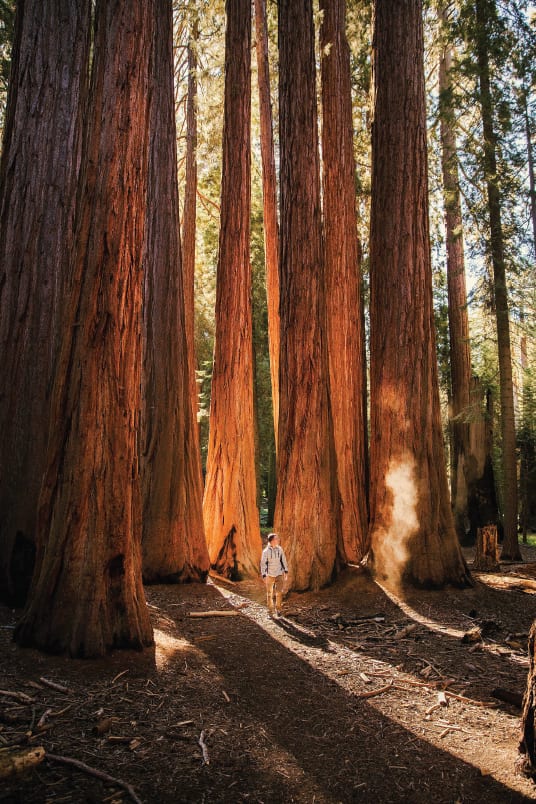
When the pain is too strong, we are not able to decide anything,
and plants do the same thing in stress situations.
They produce pain-suppressing substances,
and that is a very strong hint that plants are
also conscious and that they are able to feel pain.
The researcher found out that plants and trees are really able to feel pain, and that’s one of the topics in my new book. Pain may be a reflex. For example, when insects bite the bark of a tree, we can measure an electrical signal in the tree. Can we call that a defensive reaction pain? We don’t know. But we do know that plants and trees are able to produce pain-suppressing substances. We also do that in certain situations, when we have big stress, and when pain disturbs our mind.
When the pain is too strong, we are not able to decide anything, and plants do the same thing in stress situations. They produce pain-suppressing substances, and that is a very strong hint that plants are also conscious and that they are able to feel pain. Now, that is a sacrilege, because the next question we often hear is, “Then, what should vegetarians eat?” But that is not the point. It is just a surprise that plants are nearer to us than we thought, and the categories – animals, plants, humans – are made by scientists to sort nature, but they have nothing to do with how much worth living beings have, and how living beings are able to feel and to work together with other beings. So, the dividing line between animals and plants is falling at the moment.
Q: From the perspective of yogic science, there is the classification of the three bodies – the physical body, the subtle body, which is consciousness, mind, etc., and the causal body or soul. All three bodies exist from the mineral kingdom up to the animal kingdom, including humans. And the differences lie in how separate those bodies can be. In a stone or rock, for example, the three bodies are very closely bound, whereas in plants they can be more separate. We see this in the way plants can respond to sunlight, or close their leaves with touch, and all sorts of other sensitivities. In animals, the three bodies are more separate again, to the extent that in human beings and maybe other animal species, the mental body can move out of the physical body. For example, when we dream, or when I am here in Australia, thinking of you in Germany, my mind is with you there.
So, for yogis, consciousness is in everything, even in atoms. It is how much flexibility or separation there is from the physical body, and how expanded consciousness is, that varies from one type of organism to another. It is interesting that science now is also seeing that all living beings have consciousness in some way. Plants’ consciousness may not be like ours, but what’s fascinating is that plants are able to store, utilize and hold atmosphere, because they harness energy and don’t dissipate it the way humans do. That is why you can have a beautiful sacred grove of trees, which feels so lovely, because the trees harness the good vibes from the atmosphere and hold them much better than we can. It’s quite fascinating.
PW: Yes. What interests me most is, “What is really important for our life?” I think plants can feel pain. I think they can feel much more, also, but pain is what we can scientifically detect very easily. We know that animals feel love, pain, and other things. I think the main difference is intelligence, but intelligence is not the most important thing in our life. If you ask anyone, they will tell you, “The most important thing is love, to be happy.” This is to do with our emotions, and our emotions have nothing to do with intelligence. Trees won’t write books, probably because they don’t need them, and perhaps because they are not able to. But it doesn’t matter. Trees feel and they care for each other. You know, plants even respond to experiments like the dogs of the scientist, Pavlov, who rang the bell and the dogs salivated. You can do similar experiments with peas. They are able to learn in such complex ways, and they are plants.
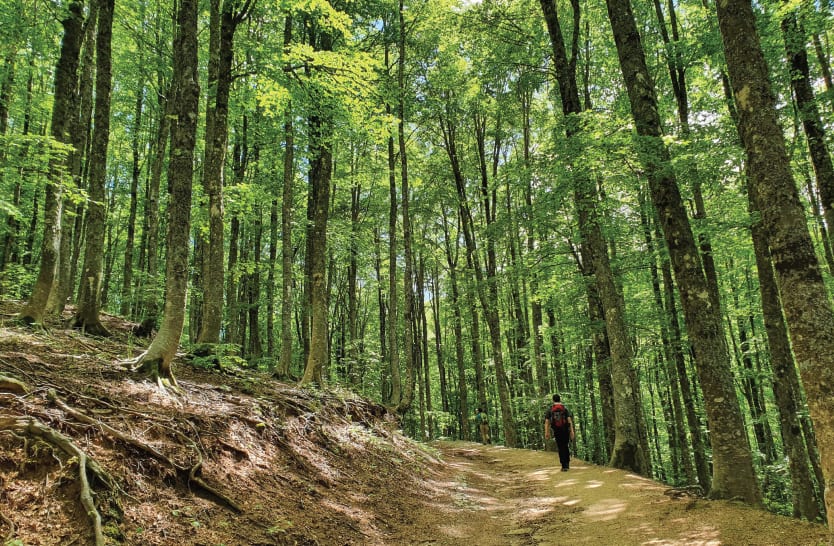
We know that trees care for each other and nowadays we also know about epigenetics. Just as we pass learned experiences to our children, trees are able to do the same thing. We know from recent research that seedlings know exactly how to deal with new conditions, and that is very good news in times of climate change. Trees are constantly learning – lifelong learning. So, for example, when a 1000-year-old oak makes seedlings, those seedlings have the experience from the parent’s 1000 years. They are able to change their way of living so that they can survive in new conditions. Unfortunately, nowadays, foresters don’t give the trees time to learn, and that’s not good. In Germany, they say, “Those beech trees are dying,” and I am saying, “No, they are learning. Let them be. Don’t disturb them by cutting the older trees from their communities. Don’t strip those family banks. Let them learn.” We create hard times for trees, but they are able to deal with it. There is also new research from Germany and Russia, showing that trees can cool down their surrounding landscape by up to 15 degrees Celsius. They can actively create rain. And right now we are suffering from heat and drought. Trees are able to bring the thermostat down and bring the rain back, which is what we need. The only thing they need is peace. They don’t need chainsaws. That is the solution. It is so easy.
We are suffering from heat and drought.
Trees are able to bring the thermostat down and bring the rain back,
which is what we need.
The only thing they need is peace.
They don’t need chainsaws.
That is the solution. It is so easy.
Q: You have mentioned climate change. With animal species, we are in the middle of a mass extinction. Is the same thing happening with plants, or are plants able to weather the situation better?
PW: The thing is, we don’t know exactly what is happening with animals. For example, we work with an entomologist who is researching insects. He says that in Germany only 25% of the insects have been well researched and 75% have not been researched, so we don’t know if they will go extinct or not, because we have so little insight. And with plants it is even worse, because what are plants worth? In most people’s eyes they are just plants, as insects are just insects. We look only at mammals – “Oh, they are very important” – but insects are also important; bacteria are also important. There are so many things that we haven’t discovered.
So I would say that, yes, we see the same phenomena. But because we don’t know what’s going on, we shouldn’t concentrate on single species, like rhinos or elephants; we should focus instead on the big ecosystems. And I think that’s also happening. We have various politicians saying that 30 to 50% of the landscape (most say 50%) on Earth needs to be protected, without human interference, to rescue all those species, because we don’t know what we are going to lose. I think we will also lose many plant species.
Q: Hopefully, humanity will change its attitude going forward. Can we now turn a little bit away from this very hot topic, to know something of your personal experience and your stories? What have you discovered working with trees, working with forests? What inspires you about your work?
PW: I am always curious to look at how trees behave. For example, it is said that cherries can’t grow in the shade. And then I see an old forest, a protected area, with big beech trees that create the deepest shade you can image, and underneath those beech trees there are cherry trees growing. And they shouldn’t do that according to scientists. I love discoveries like that. You see, the scientists are wrong; cherry trees don’t need sunlight, they only need to be left alone, without our disturbance. That’s the point. Another thing I discovered was how slowly young beech seedlings grow. You can see little knots on their branches, and when you count those knots, which are like year-rings in timber, you discover that these seedlings of twenty to thirty centimeters in height are about thirty years old. You can estimate that a tree of two to four meters in height is about 150 years, and they are waiting for their chance to grow up. They have to wait until their mother-tree dies, and that may be another two or three centuries. I love to see how slow a forest is. There are so many little hints to show you how slow forests are, how slow trees are. They don’t like to be in the fast lane. You discover all this when you walk through a forest which is unstripped, and that is when you see many little lovely things.
I love to see how slow a forest is.
There are so many little hints to show you how slow forests are, how slow trees are.
They don’t like to be in the fast lane.
You discover all this when you walk through a forest which is unstripped,
and that is when you see many little lovely things.
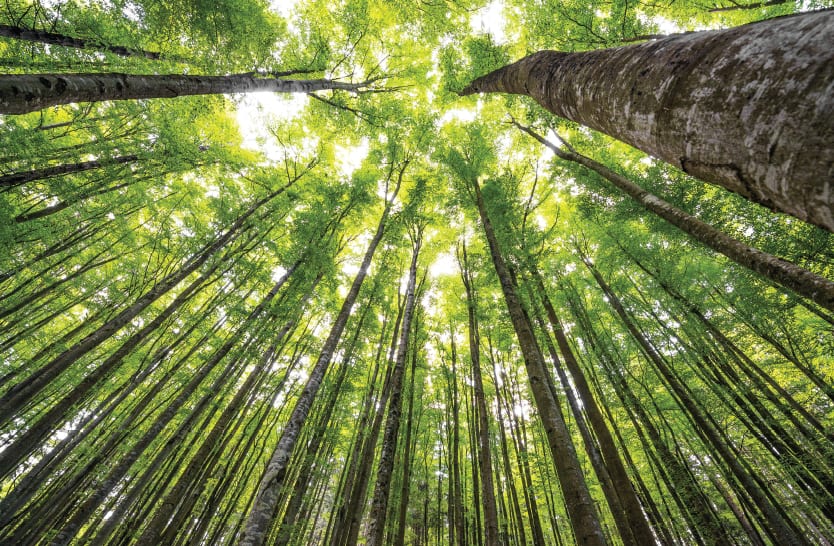
Q: So, they have patience, waiting for the right time.
PW: Yes, they are just waiting for their chance. And there is also good news: You get forests back everywhere as long as you let them come. For example, we have a tennis court here in the neighboring village. In the last three years, we have had a very bad drought in Germany, very hot summers, the highest temperatures every, many months with nearly no rain, and so many forests have suffered. And this tennis court in the sun is the worst place for trees. During those three years, because no one cared for the tennis court, it has become full of young trees. We don’t know where they get their water from. It is the driest place around, but it is fenced in so no one gets in. And there are ten different tree species and they are healthy. Forests come back everywhere. You just have to let them grow.
Q: This is obviously a key message. If we are going to change, it’s got to come from education, from early childhood, so, what would you do with children? What would you suggest to educationists to bring about a shift in our consciousness towards trees?
PW: There are many different things. For example, I also write children’s books, and the newest book will be released in two weeks. I write books for children from age two years up, for different age groups, and the main topic of these books is to go out and experience trees yourself. I founded a forest academy here in the neighboring village, and we go out with the children. We don’t teach them which tree species these are, we teach them what the trees are doing, and that the public is the caretaker of the forest. And the public for us includes the children, because children count. And we tell them what their possibilities of influence are.
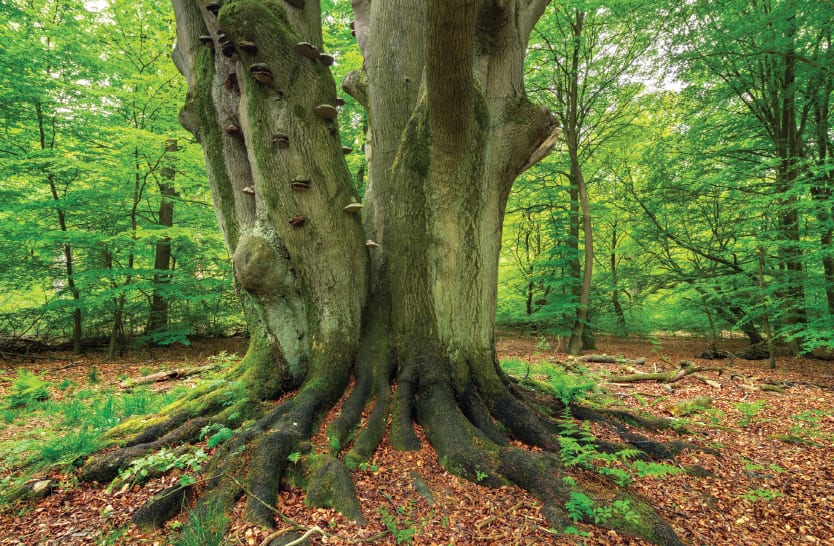
For example, we teach them that they can be very loud in a forest, because that is very relaxing for animals. When children are shouting loudly, then the animals know that there are no hunters approaching, so they can relax. I love things like that. For me it’s important that the children feel well, and say, “It’s like a big living room for us. That is our real living room, where we belong.” The biggest problem is always when they are with their parents. After ten minutes, the parents say, “Hurry up, we have to go and continue our hike.” We say, “No. It’s a hike for children. If the children want to stay at the same place for two hours, it’s fine.”
Q: Are your books for children translated into English, Peter?
PW: I think we have so far translated three into English.
Q: Can you send me the names of those books? Normally, I live in India, at the Heartfulness headquarters. It is a 1,400 acre property called Kanha Shanti Vanam, which means forest of peace. And we have a school there, where children come from all over the world. You would love it. Six years ago the land was barren, but we now have rainforests growing, and we’ve planted half a million trees. As you mentioned, trees create their own microclimate. They create rain, they rejuvenate the water table. It’s incredible that in six years this place, which was completely barren, has over seventy bird species and is full of forests. The children are out in nature all the time, and I would love to give them your books. The German government is working with us, so it is also a German language school, and we will be able to give them your original books in German as well as the English translations.
PW: I can give you the titles. One is called Can You Hear the Trees Talking? It is for the middle age group. Another is Peter and the Tree Children, a picture book of a squirrel which has no family, and discovers that trees have families. At the end of the book, he is adopted by the forest as his family.
Q: Lovely! Let’s finish up with your new book for adults that will be released in June – The Heartbeat of Trees. Tell us what inspired it, and what will readers discover in it?
PW: There are some new discoveries about trees, and the title gives a hint about that direction – how trees are able to circulate water. For me, what is even more important is the question: Have we lost the bond with nature? Many people say that humans can’t hear as well as animals, we can’t smell as well as animals, and so on. But we are so strongly connected with nature. We just have to sharpen our senses, and then we can connect with nature, understand nature better, and receive more health benefits. The book circles around both themes, with many examples of how strongly we are connected, how important it is to save nature, and to understand that we are still a very strong part of nature. In general, we are not destroyers of nature. It is just a question of how we behave when we are out.
We are so strongly connected with nature.
We just have to sharpen our senses, and then we can connect with nature,
understand nature better, and receive more health benefits.
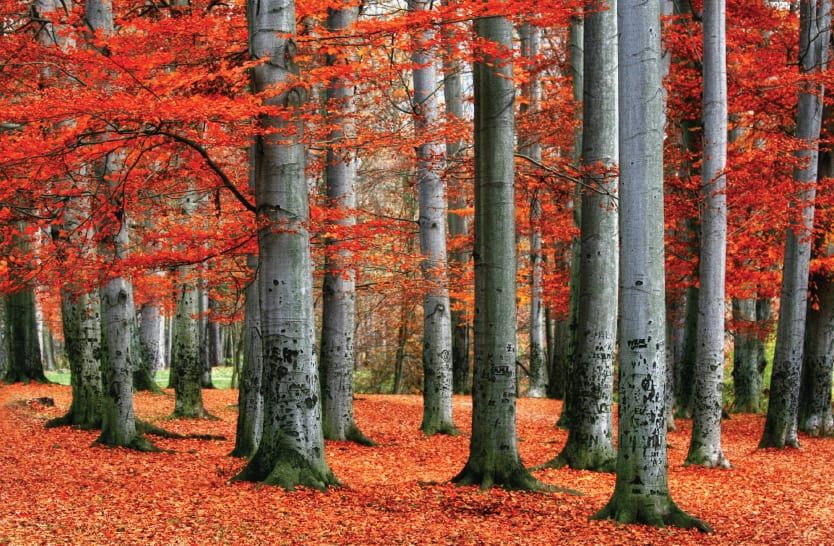
Q: I am hoping everybody will read it. It is so good to see the science supporting this viewpoint.
PW: There is hope. I am really convinced that in the next five or ten years we will see a turn in these things. I am really optimistic that we are able to deal with climate change, to stop it. But for that we need the help of nature. The most important thing is to let natural forests come back, to let nature come back. In my opinion, it’s not about coal and not about oil, but about meat. That’s the most important thing. The massive meat consumption is the main climate driver, and most people don’t want to hear it, because it is easier to buy a car with less gas consumption than to reduce meat consumption. That’s the main topic, but we will see the change. Perhaps because of the COVID-19 crisis, it is gaining momentum, because most people are thinking about what they are doing.
Q: Thank you kindly, Peter. I thoroughly enjoyed our conversation.
PW: Thank you, Elizabeth, it was really a pleasure to talk with you.
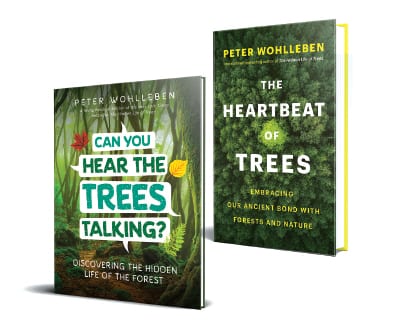
Interviewed by ELIZABETH DENLEY

Peter Wohlleben

